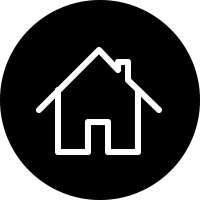




Sustainable
Information Systems?
Images freely provided by wix.com
EDP 4130: Resource 2
Overview
To effectively address the two content descriptors to Year 6 students. The proposed lesson sequence is has been developed as a resource to use. The lesson sequence provides details of what each lesson is to outline and what resources are required.
Throughout the lesson sequence the students will examine main components of common digital systems from the past and present and see how they transmit data. This will initially be done as a class, and then students will continue to work in a group. After the students have done this, continuing in their group they will choose from a list of information systems used today, state how it is sustainable, how it meets needs of people today and how it could be improved for use in the future.
Key Ideas
Creating preferred futures:
Students address this key idea as they develop an understanding of the sustainability of current information systems and determine how they could be improved for use in the future. Considering sustainability and the needs of human kind (ACARA, 2016b).
Project Management:
Students address this key idea by planning, organising their project of researching and determining how information systems could be improved for future use (ACARA, 2016b).
To learn more refer to Key Ideas.
General Capabilities
-
Ethical understanding is integrated as the students explore ethical concepts in context through exploring how technologies used today can be used in a more sustainable way in the future (ACARA, 2016c).
-
Personal and social capability is integrated as the students are learning to contribute to a civil society and participate in group work (ACARA, 2016c).
-
Critical and creative thinking is integrated as the students identify, explore and organise information and ideas (ACARA, 2016c).
-
Literacy is integrated as the students comprehend, navigate, read, interpret and view learning area texts (ACARA, 2016c).
To learn more refer to General Capabilities.
Cross-Curriculum Priorities
The cross-curriculum priority Sustainably is addressed, as the students are required to determine how an information technology used today can be sustainably used in the future (ACARAd)
To learn more refer to Cross-curriculm Priorities.
Differentiation
-
Differentiation is cater for thoughout each lesson
-
Various learning styles are addressed and catered for throughout the unit plan including visual, kinesthetic, reading and writing, and auditory
-
The groups are chosen by the teacher, which are of mixed ability. This allows the lower students to be assisted by the higher students and the range of ability allows for a vast range of ideas for the students to bounce off.
-
Formative and summative assessments are both evaluated in consideration of the individual student's ability and modification may be necessary to some student's rubric.
Prior Knowledge
-
Students access their prior knowledge throughout the lesson sequence
-
In the first lesson prior knoweldge is assessed by the teacher before teaching them content through a general discussion
-
Throughout other lessons general discussion is also used to attain prior knowledge
-
A review of the previous lessons also helps the teacher assess the knowledge the students are coming into the lesson with
Learning Objectives
-
Students understand how information systems can be used sustainably in the future
-
Students understand how information systems cater for the needs of people
-
Students develop their researching skills
-
Students understand how information systems from the past and present transmit data
Summative Assessment
At the end of the lesson sequence the students are required to undertake an assessment piece. They are required to display their understanding of a previously research information system and determine how it could be used sustainable in the future.


